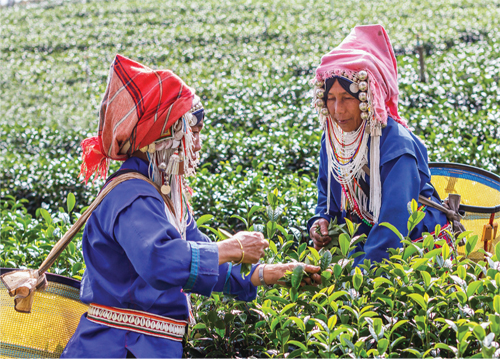Nature can go hand in hand with tourism, Asia’s trade players realise as they recognise the importance of tapping wildlife resources in a non-consumptive manner. Xinyi Liang-Pholsena unearths the growing trend
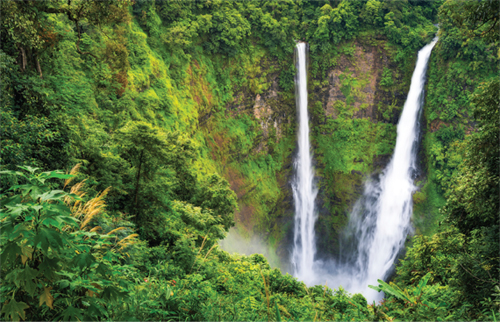
Recognising the high-yield, low-impact benefits of ecotourism, governments in South-east Asia are now putting serious efforts to develop this niche market by including principles of sustainable and responsible travel in national tourism planning frameworks and policies.
At the regional level, the first-ever ASEAN Ecotourism Forum (AEF) which took place in Pakse, Laos in June brought together tourism ministers and senior executives from the 10 ASEAN member countries plus China, Japan and South Korea to discuss regional cooperation regarding sustainable tourism development.
One clear manifestation of AEF is the adoption of the Pakse Declaration on ASEAN Roadmap for Strategic Development of Ecotourism Clusters and Tourism Corridors, which will be submitted to the heads of state for adoption during the 28th ASEAN Summit in Vientiane in September as one of the key deliverables under Laos’ ASEAN chairmanship in 2016.
The Pakse Declaration takes its inspirations from the European Green Belt – a pan-Europe ecological network that stretches along the former Iron Curtain – and seeks to develop ecotourism clusters and tourism corridors and facilitate cross-border travel as well as travel into rural areas and nature reserves; unlock economic opportunities along overland and waterways; create employment opportunities; revitalise idle natural resources; and transform impoverished areas, announced the ASEAN tourism ministers in a joint media statement during AEF.
Bosengkham Vongdara, Laos’ minister of information, culture and tourism, said during the forum’s opening that it was “appropriate and timely for ASEAN to closely join hands in realising the new ASEAN Vision 2025 and ASEAN Tourism Strategic Plan 2016-2025”.
The Malaysia National Ecotourism Plan 2016-2025 will be using the cluster approach – i.e. grouping a critical mass of competitive and/or complementary tourism products in a geographical area – as a planning tool, informed Amran Hamzah, a professor in tourism planning and director of the Centre for Innovative Planning and Development at Universiti Teknologi Malaysia (UTM).
While he declined to reveal more details of the plan at press time as the strategy was still undergoing discussion, Amran said that it will seek to avoid earlier weak points in the National Ecotourism Plan 1996 such as the absence of “buy in” from the private sector.
Frans Teguh, director of infrastructure development & tourism ecosystem at Indonesian Ministry of Tourism, sees “big potential for marine tourism” and projects ecotourism to contribute to 10 per cent of the country’s tourism market within the next five years.
The Indonesian government will integrate ecotourism into the national masterplan this year, in addition to identifying destinations like Lake Toba, Labuan Bajo and Mandalika as priority areas for ecotourism development. As well, a special pavilion dedicated to sustainable tourism will debut at PATA Travel Mart this year, Frans told TTG Asia.
Myanmar, a late entrant to the ecotourism scene compared with its regional peers, has laid out the Ecotourism Policy and Management Strategy for Protected Areas last year, following the 2013 Tourism Master Plan, revealed Yee Mon, permanent secretary of Ministry of Hotels and Tourism.
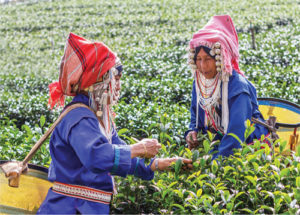
Ground-up efforts, public-private partnerships take root
On the ground, industry stakeholders are paying greater attention to public-private partnerships to drive the sector. Governments are recognising that local buy-in and community ownership will lead to better success of projects while private sector players also need the authorities to drive and enforce policies.
SB Chetry Win Tin, managing director of Journeys Adventure Travel and Myanmar Hill Lodges, posits that Myanmar is moving in the right path with a more open and democratic government in the helms, bolstered by funding from government and international development organisations like GIZ. “We were left out from most of ASEAN’s regional planning in the past but we’re now back on the map and fully engaged,” he said.
However, the widespread perception of Myanmar as a cultural destination is perhaps the biggest bugbear in growing the adventure and ecotourism sectors, opined Chetry. Few visitors are even aware that South-east Asia’s highest peak is found in Myanmar’s north, for example, he added.
Suthep Keasang, director, Office of Community-Based Tourism at the Designated Areas for Sustainable Tourism Administration (DASTA) – a government agency set up under the Office of the Prime Minister in Thailand to develop sustainable tourism in the designated areas – opines that ecotourism development in the country is progressively moving in the right direction with stronger support from the government.
“Getting coordination among all stakeholders is an all-time challenge,” Suthep admitted. “We must remember communities don’t live their lives for just tourism,” he added, emphasising the need for community involvement.
Likewise, Inthy Deuansavan, founder and owner of Green Discovery Laos, who is widely credited as a successful ecotourism entrepreneur in the country, stresses the importance of local involvement and livelihood building. Using Tree Top Explorer at Jungle Hotel Paksong as an example, Inthy stated how the zipline adventure project in southern Laos his company initiated has benefited local villages.
“Our staff strength grew from 24 to 100, and the village still has many young people unlike other Lao villages where youngsters move away to cities for work,” said Inthy. “Tourism income is now higher than coffee cultivation, which used to be the main livelihood in this village.”
Urging a “more conscious” approach to responsible tourism, Gregorio Rojas, programmer manager at Fairtrek, advocates suppliers to address all aspects of being a responsible travel provider. “Many suppliers only offer ecotourism in one aspect but ignore other components such as garbage disposal,” he remarked. “Therefore we need vendors and suppliers to have access to information, while tour operators should educate their suppliers on ecotourism.”
Industry players are increasingly cognisant of the role suppliers play in the sustainable development of ecotourism, with Bangkok-based DMCs like Khiri Travel and Exo Travel having successfully achieved Travelife certification, a leading international sustainability certification for the travel and hospitality industry.
“The Travelife assessment applies to our supply chain, internal operations and hotel assessments,” said Exo Travel’s sustainability coordinator Thuy Nguyen. “We want a globally recognised standard but at the same time we also give feedback to Travelife, which has a working group in Bangkok, on the criteria to better cater to the local and regional differences,” she said.
Establishing ecotourism certification standards for Asia was one of the aims that drove Masaru Takayama, founder of Japan Ecolodge Association and responsible tour outfit Spirit of Japan, to spearhead the formation of the Asian Ecotourism Network last year. The network is located in Bangkok under the care of DASTA, with satellite offices in India, Indonesia, Japan and Malaysia.
Takayama remarked: “There are a lot of (sustainable tourism) standards but they are usually developed by EU or the US. We want standards for Asia by Asians.”
The network has entered into a partnership with Global Sustainable Tourism Council and set up as an internal committee to look at setting up global ecotourism standards for Asia by next year.
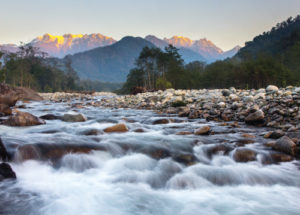
Forging a path ahead
Ultimately, people remain the most vital link for Asia’s ecotourism sector to flourish, a point that most trade players unanimously agree on.
“Public-private partnerships are definitely important but most critical is the correct people to lead the development,” said Neeracha Wongmasa, managing director of Phunacome Resort and a committee member of Thai Ecotourism & Adventure Travel Association.
What also matters, Neeracha added, is “consistency in policy”, which also leads to questions of sustainability, especially in Thailand which has seen frequent changes in the country’s leadership in recent years. She elaborated: “Authenticity is a dynamic concept, as it will change with time as a destination modifies, so what’s more important is that the aims are clear and remain unchanged even if the people involved change.”
Owing to the “high startup costs” in ecotourism ventures, Asian Development Bank’s senior portfolio management specialist of Lao PDR Resident Mission, Steven Schipani, urged governments to proactively identify viable tourism projects and provide stronger destination marketing in order to lend a helping hand for SME entrepreneurs in this niche sector.
Meanwhile, Xu Jing, regional director for Asia and the Pacific, would like to see more open visa policies. “Unless visa issues are facilitated and seriously taken up by governments, ecotourism benefits cannot be fully realised,” he commented.
As well, accessibility remains a key issue, pointed out Asian Trails Laos’ managing director Andreas Hofmann who said that better connectivity would enable tour operators and DMCs to better promote an ecotourism destination to time-starved travellers, echoing industry sentiments for more direct flights linking secondary destinations in South-east Asia.
To avoid limiting the sector potential, trade players also caution against boxing ecotourists into strict categories, as the definition of ecotourism runs the gamut from hard to soft and travellers may not be engaged in nature-based activities throughout their vacation.
“Urban ecotourism is no longer an oxymoron,” UTM’s Amran said, pointing to the many ecotourism types in Asia such as Singapore’s Gardens by the Bay.
“There’s no need for good walking shoes there,” he quipped. “And will this be the trend for Asian tourists?”
Managing river flows for tourism and development
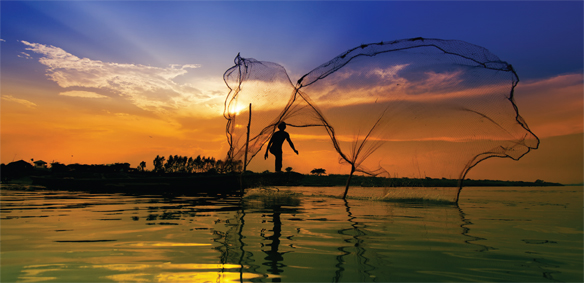
As the popularity of Mekong River cruising continues to grow at a rapid pace, industry experts are urging drastic measures to be put in place to ease rising congestion and move the industry forward.
At this year’s Mekong Tourism Forum in Sihanoukville, John Boyd, director of Pandaw Cruises, said: “The main concern is there are too many ships; it’s almost out of control. We’re not against competition but it gets so congested. Passengers are fed up of bumping into other boats.”
Fears were raised that the market will be unable to sustain increased demand if operations and infrastructure are not upgraded along the Mekong. Naidah Yazdani, Asia director, CF Mekong River Cruises, said: “It’s reaching a point now where unless we develop those facilities, we cannot take the industry to the next level.”
Additional and improved docking facilities and allocating slot times for boats are necessary to avoid the “scrabble for the same dock” at destinations such as Phnom Penh, said Maarten Perdok, managing director, Heritage Line.
To ensure this happens, more cross-border communication needs to be carried out between authorities, with operators working closely with local communities to preserve the authentic Mekong experiences that travellers desire.
Yazdani said: “The Mekong is not about experiencing wines or seeing several capital cities; the Mekong is about visiting small villages. It’s about experiencing the contrasts between the countries.”
The Mekong, which spans six countries and diverse cultures, is ripe for ecotourism development. Walter Jamieson, Asian Development Bank consultant and professor at Thailand’s Thammasat University, is helping to draft a tourism strategy with the UNWTO to develop ecotourism and authentic traveller experiences along the Mekong.
Jamieson proposes breaking the waterway down into seven “sizeable products, each with their unique theme” to introduce greater focus and coordination. “We must increase the quality and variety of river-based tourism activities on the Mekong,” he added.
An example is Mekong Dawn Cruises, which offers intimate trips from Phnom Penh to Siem Reap, stopping at villages along the way so passengers can watch local craftsmen ware their goods, explore off-the-beaten-track pagodas and discover traditional floating villages.
Moreover, with river cruise passengers offering a different dynamic to the backpackers the region traditionally attracted, the river cruise market holds a lot of potential. “(River cruise passengers) tend to be older and have higher income,” said Boyd. “This is a very special market for the region, and one that can truly be developed.”
And with the majority of Mekong River cruises currently catering to Western travellers, the mass Chinese and Indian markets are yet to be targeted and offer a huge untapped potential, said trade players. However, this needs to be done such that further developments do not burden the waterway with more traffic and pollution.
“We need to be careful as this will be extremely difficult,” said Yazdani.
Additional reporting by Marissa Carruthers
This article was first published in TTG Asia, August 5, 2016 issue, on page 20. To read more, please view our digital edition or click here to subscribe.


